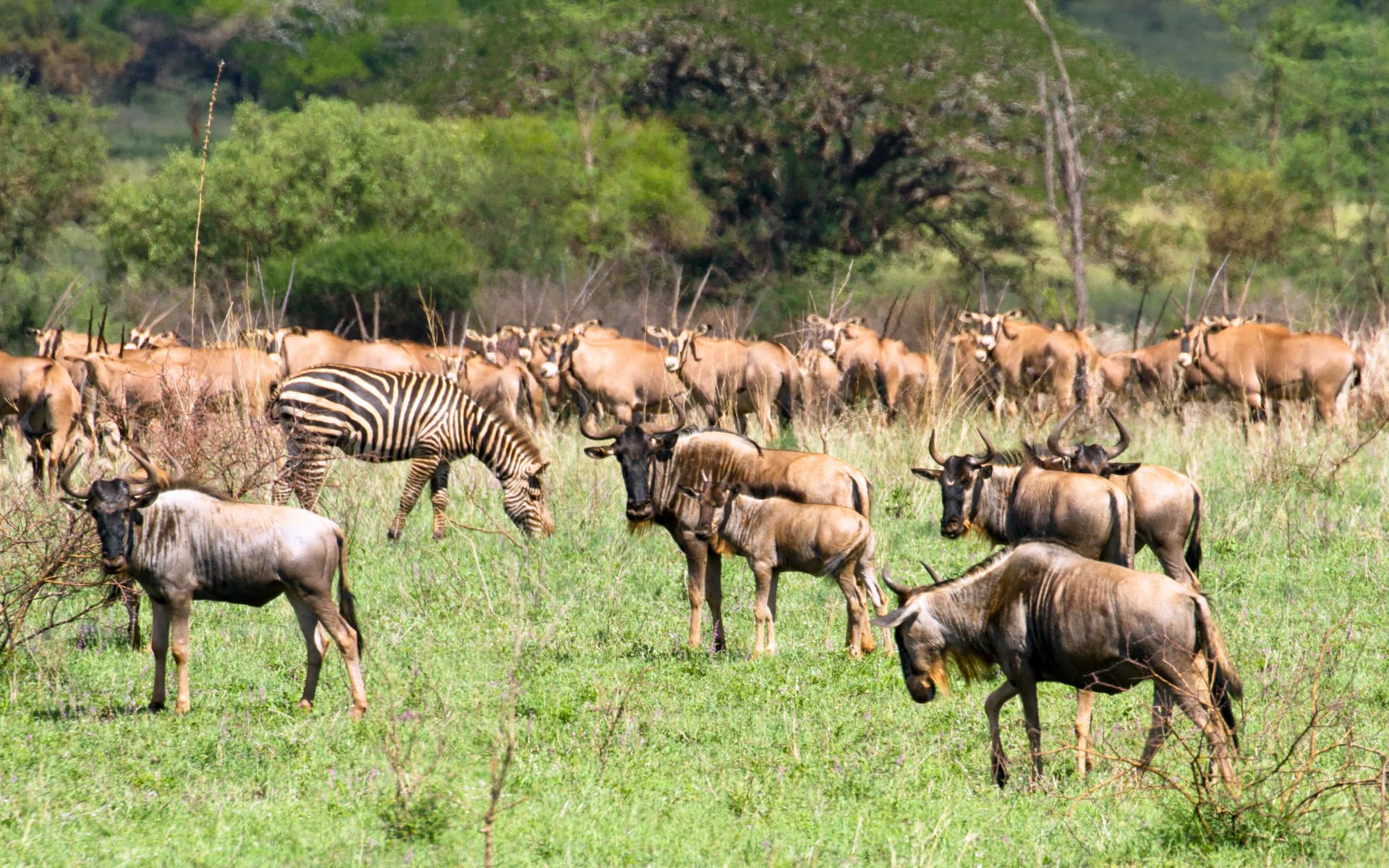Rangeland Restoration: A Collaborative Journey Across Tanzania
Healthy rangelands are the lifeblood of African wildlife and pastoralist communities. Sadly, these crucial ecosystems are under threat, facing fragmentation and degradation due to population growth, overgrazing, erosion, and invasive species – all exacerbated by a warming planet.
To combat these challenges, African People & Wildlife (APW) introduced the Sustainable Rangelands Initiative in 2016. Through this program, APW empowers communities to manage their rangelands sustainably by enhancing capacity, leveraging technology, and reviving traditional monitoring and management practices.
After a busy few months of activity, we're eager to share our recent strides in rangeland restoration and conservation—a testament to collaboration and community-powered efforts in the battle against climate change.
Traditional Leader Dialogue: Strengthening Community Bonds
APW recently brought together 176 passionate rangeland defenders representing a diverse range of stakeholders from Tanzanian ministries to the village level, for a traditional leaders harmonization meeting in Longido. This was a significant step toward our landscape-level conservation efforts in Greater Lake Natron through the Land for Life project.
Discussions focused on climate change readiness and preparedness for El Niño, as well as rangeland improvements and harmonization of grazing plans. One notable outcome was the decision of traditional leaders to form a community-based organization, aimed at implementing and enforcing grazing plans within Longido district with the support of related ministries. This work is a critical part of our approach to conservation issues at village, district, and national levels, bridging ideas and solutions from the community to the government and strengthening traditional systems of natural resource management.
Establishing Rangeland Monitoring in Greater Mkomazi
In June, our team initiated a preliminary rangeland site assessment in four villages within the communal rangelands surrounding Mkomazi National Park, one of our newest conservation landscapes. This assessment, examining vegetation cover, soil condition, and existing grazing plans, was a foundational step toward enabling grazing committees to make informed decisions. Engaging in dialogues about rangeland management with local leaders played a vital role in this process.
By August, we were ready to train the first community rangeland monitors in Greater Mkomazi, building knowledge about pastoral livelihoods and rangeland management. The outcome was not only an increased awareness of traditional and scientific knowledge on rangeland monitoring but also a heightened understanding of invasive species identification—a vital component of sustainable rangeland health as climate change continues to threaten pasture quality and biodiversity.
Community-Driven Rangeland Restoration
In collaboration with the HUSISHA program supported by Trias, we joined forces with community members in Baraka and Losirwa villages in early October to combat invasive species on 219 acres and enhance critical rangelands that support wildlife corridors in the Tarangire-Manyara landscape. In addition to uprooting, our approach involved controlled fire usage to eliminate invasives, promoting regeneration and suppressing further spread through seeds.
An incredible 153 community members actively participated in the project, including a group from the Pastoral Women's Council, a fellow HUSISHA partner. The positive response and increased awareness of the impact of invasive species on livelihoods emphasize the importance and benefit of community-based conservation. Our next steps include closely collaborating with the grazing committee to introduce rotational grazing and ensuring the sustainable management of the grazing area during both wet and dry seasons.
Finding a Balance Through Restoration
In each of these initiatives, collaboration and strategic partnerships have been the bedrock of our progress. We appreciate the support and enthusiasm of every individual and organization that stands with us in our work with communities to sustain healthy, functioning rangeland ecosystems capable of supporting people and wildlife. Looking ahead, we will continue to expand our rangeland monitoring and restoration efforts while strengthening our existing project areas, offering a model that can be replicated throughout Tanzania.
Learn More About Rangeland Restoration
- APW’s Sustainable Rangelands Initiative
- [Blog] Climate Change Stories: Challenges, Action & Hope on Tanzania’s Frontlines
- [Podcast] A community effort: monitoring rangelands in Tanzania
- [Blog] Empowering Rural Communities: Harnessing the Power of Natural Resources
- [Article] Why growing grass helps save lions, and vice versa





